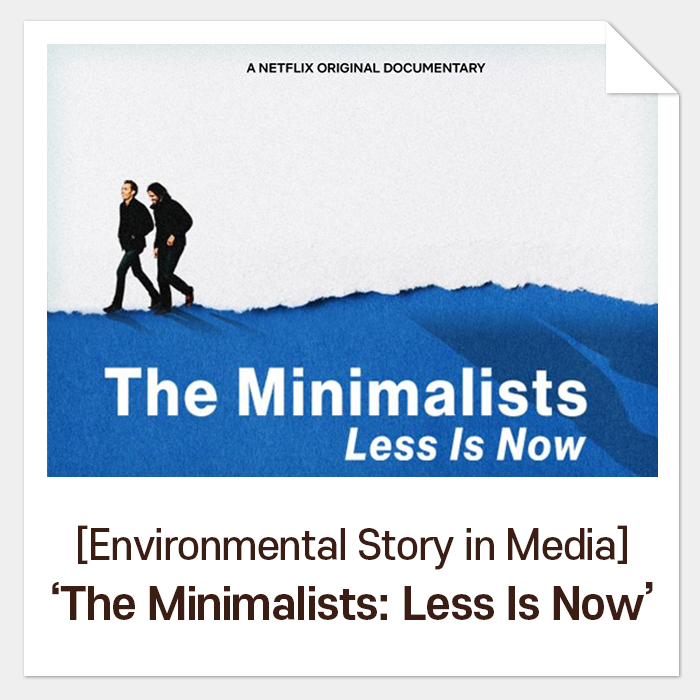[Environmental Story in Media] Fast Fashion: The Real Price of Low-cost Fashion
Do you remember the 18th Seoul Eco Film Festival at the beginning of last month? Today, we would like to introduce one of the 64 films that were on-screen during the festival, a documentary movie titled ‘Fast Fashion: The Real Price of Low-cost Fashion’. The theme itself was interesting enough, but we got more excited about the fact that the movie was directed by Gilles Bovon who has made several award-winning documentary films and Edouard Perrin who has worked as a reporter and a journalist for 25 years.
Fast fashion is in the same vein as fast food, referring to clothing that is quickly manufactured and distributed reflecting the latest fashion trend. This includes SPA(Specialty store retailer of Private label Apparel) brands that directly manage the whole process from design to sales such as H&M, ZARA, UNIQLO, SPAO.
After the World
War 2, the industry has become more innovative by spurring on the renovation on
manufacturing and supplying process as well as material development and clothing
is now a way to express oneself and even means of play. SPA brands satisfy customers’
needs by providing low cost, quick turnover with trendy designs. The movie ‘Fast
Fashion’ explains what makes this rapid growth possible and accuses the fatal dark
side of the low-cost fashion industry simultaneously.
① Fast fashion,
a close call between legal and illegal
SPA Brands’ overwhelmingly rapid pace is possible by copying a design. They cunningly copy a design from their competitors and change a few parts just enough not to break the law. Ironically, it is lawyers who confirm and approve the designs. In fact, one of the raincoat companies in the Netherlands is in litigation against a SPA brand that copied almost the entire design of their own product.
② Clothing
cheaper than a meal, outcome of exploitation of labor
If the quick production pace is available by design copy, how do they manage to provide clothing at such a low price? As we are well aware, fashion is a labor-intensive industry. Therefore, most of the factories are located in developed countries where there is no strict regulation for laborers with low labor costs or in areas where people cannot be protected by law due to certain circumstances. The town called Leicester in the UK is famous for textiles, brewing, dyeing, and weaving industries and also is open to immigrants and illegal overstayers. One of the SPA brands set up a factory here and squeezes out residents’ labor by offering less than the minimum wage. The documentary urged us to think about these poor working conditions that bear up the fashion industries.
③ The
cost for fast fashion, environment and ecosystem
It is estimated that 5.6 million tons of fast fashion clothing is sold annually. It requires 200 tons of water to produce 1 ton of clothing and if they are not chosen by customers, they end up being incinerated. This must be a great burden on the environment.
Although fashion
industries have affected the environment in various ways such as carbon emissions,
clothing waste in landfills, and microplastic, the movie especially points out the
problem of Viscose Rayon that is known as an environment-friendly fabric. It is
produced by extracting cellulose fiber from wood pulp using chemicals. The problem
is that CS2(Carbon disulfide), one of the chemicals used for the process, is highly
toxic. If a person is exposed to the material, it causes nauseous, vomit, stomachache,
headache, and even deformity and death that it needs to be handled very
carefully.
 |
| Resource: https://www.independent.co.uk/climate-change/sustainable-living/environment-costs-fast-fashion-pollution-waste-sustainability-a8139386.html |
The movie delivers
how dangerous the material can be by showing the disastrous reality of people living
in Nagda in India, where one of the SPA brand’s factories is located. The young generation
has suffered from paralysis and a young woman’s hair turned completely white. With
help, the people in the town proved these symptoms were derived from the exposure
to CS2 used by the factory and were able to be supplied safe water from the company.
However, they already paid a terrible price.
The real cost
of fast fashion, who is paying it?
Fast fashion did not seem to have any close connection to the environment; we do not see the clothes fill the air like fine dust, they are not found being stuck in the turtle’s nostril nor floating in the ocean. However, this documentary film tells us to think beyond what is seen. The Fast Fashion industry has been boosted by our greed wanting them to be much faster, cheaper, easier, and trendier and this has been destroying our environment ruthlessly while the cost is charged on Earth and the ecosystem.
Then, what are
the things we can do at this moment? Most of all, we need to stop and change our
consuming habits in fast fashion and reestablish the standard to choose clothing
for a sustainable life. It requires to consider if we are buying clothes that are
absolutely needed, if we keep the clothes long enough, and if there are any
other upcycling ways to add value. We strongly suggest watching the film ‘Fast
Fashion: The real price of low-cost fashion’ if you are interested in knowing
the hidden cost in the sparkling-looking fashion industries.








Comments
Post a Comment